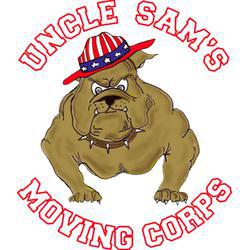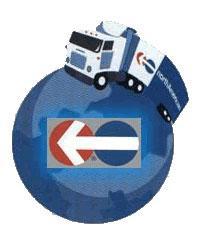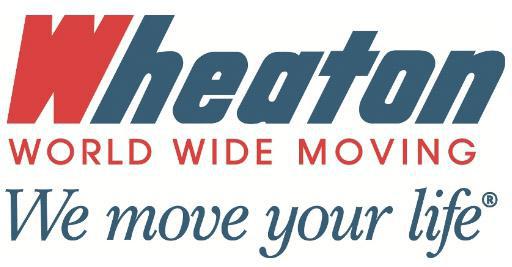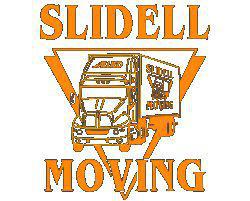Louisiana Movers Top Rated
(888) 787-781364 Movers in Louisiana
Page 1/5
List Of The Best Louisiana Moving Companies
Finding a cross country mover will involve more planning. We have resources available to help you find the state toIf you want an American moving company with the most fantastic Louisiana moving company reviews, look no further. Moving Authority is your resource for Louisiana long distance movers and local movers. Free moving estimates are always available to help you plan your relocation.
THE ULTIMATE PRE-MOVE TO-DO LIST
- Change your address on all subscriptions, and have your mail forwarded to your new location. Most subscriptions can be managed online, and you can even have your mail forwarded online. Otherwise, pop into any post office to fill out a mail forwarding form.
- Have all utilities scheduled for transfer a few days before the big move so that you’re never without any essentials like electricity or water when moving to Louisiana.
- When you switch your subscriptions, make sure to update your bank account information.
- If you have kids, make sure to transfer their registration
in school well before the move. - If your move is taking you a long distance and you’re driving yourself, make sure that your car can make the journey safely without stranding you somewhere.
- Take a look at all your belongings and see if there are things you can bear to let go of. Moving is a wonderful time to downsize and streamline the amount of stuff you own, so when you are packing everything, ask yourself, “Do I need this?”
Eat Your Way Through New Orleans Like a Local
- Breakfast at Café DuMonde
- Lunch at Cochon
- Afternoon snack at Bacchanal
- Dinner at Brigtsen’s
4 Common Grievances With Movers — And How To Fix Them
- They broke your things. A moving company is on the hook for any of your items that are damaged. Every reputable company will have a claims department that can take care of your claim for you.
- Your household goods were put into storage. There are a few different reasons this could happen, like forgetting to pay the bill or if the movers showed up and you weren't there. Communicate with the moving companies Louisiana to resolve the problem.
- My price increased. This is actually a normal
occurence when a quote is given over the phone or online, then your Louisiana moving company shows up and actually assess the moving job on moving day. The best way to avoid this is to request an on-site estimate well before the move. - My movers never came! No-show movers are bad, but there's usually a reason. Perhaps they're stuck in
traffic, or got pulled over for a random inspection by the USDOT. Give them a call to check the status, and consider choosing movers who have GPS so that traffic jams and getting lost can be avoided.
What You Need to Ask Yourself When Relocating to Louisiana
- When are you moving? It’s a huge help to get planning as soon as you figure out that you will be moving so that you can scope out the best deals possible.
- How far are you going? Moving services can be costly, and this is especially true if you’re moving long distance or even if you need a lot of services.
- Do you have the right tools? This is especially important for DIY movers. An item as simple as a dolly can save time, money, and effort during a relocation.
- What is your budget? While moving services can cost a lot, it’s important to remember that moving is an investment. You want to make sure all your things get to their destination safely, so it’s best to select a price point for what you can realistically afford and stick to it.
- Are you flexible? The most popular time to move is over the weekend during the summer months, so if you can move outside of those
timeframes , you will be able to take advantage of amazing discounts offered by moving companies. - Do you have specialty items? Heavy pieces like pianos, gun safes, refrigerators, and hot tubs need special attention when you're moving. Make sure that you have taken the necessary steps to get these large items moved safely.
Movers By City in Louisiana
New Orleans
(292)
Baton Rouge
(240)
Shreveport
(195)
Lafayette
(82)
Metairie
(52)
Lake Charles
(7)
Monroe
(60)
Slidell
(105)
Houma
(30)
Denham Springs
(52)
Bossier City
(37)
Kenner
(45)
New Iberia
(37)
Alexandria
(7)
Marrero
(37)
Gretna
(30)
West Monroe
(45)
Hammond
(37)
Covington
(7)
Mandeville
(7)
Do you know?

- A moving company, removalist, or van line are all companies that help people as well as other businesses to move their goods from one place to another. With many inclusive services for relocation like packing, loading, moving, unloading, unpacking and arranging of items can all be taken care of for you. Some services may include cleaning the place and have warehousing facilities.
- According to the U.S. Census Bureau, 40 million United States citizens have moved annually over the last decade. Of those people who have moved in the United States, 84.5% of them have moved within their own state, 12.5% have moved to another state, and 2.3% have moved to another country.
- In the United States and Canada, the cost for long-distance moves is generally determined by a few factors. The first is the weight of the items to be moved and the distance it will go. Cost is also based on how quickly the items are to be moved, as well as the time of the year or month which the move occurs. In the United Kingdom and Australia, it's quite different. They base price on the volume of the items as opposed to their weight. Keep in mind some movers may offer flat rate pricing.
- Many people are familiar with this type of moving, using truck rental services, or borrowing similar hardware, is known as DIY moving. Whoever is renting a truck or trailer large enough to carry their household goods may obtain moving equipment if necessary. Equipment may be items such as dollies, furniture pads, and cargo belts to protect furniture and to ease the moving process.
- As most people have experienced, moving does involve having the appropriate materials. Some materials you might find at home or may be more resourceful to save money while others may choose to pay for everything. Either way materials such as boxes, paper, tape, and bubble wrap with which to pack box-able and/or protect fragile household goods. It is also used to consolidate the carrying and stacking on moving day. Self-service moving companies offer another viable option. It involves the person moving buying a space on one or more trailers or shipping containers. These containers are then professionally driven to the new location.
- There many reasons for moving, each one with a unique and specific reason as to why. Relocation services, employee relocation, or workforce mobility can create a range of processes. This process of transferring employees, their families, and/or entire departments of a business to a new location can be difficult. Like some types of employee benefits, these matters are dealt with by human resources specialists within a corporation.














